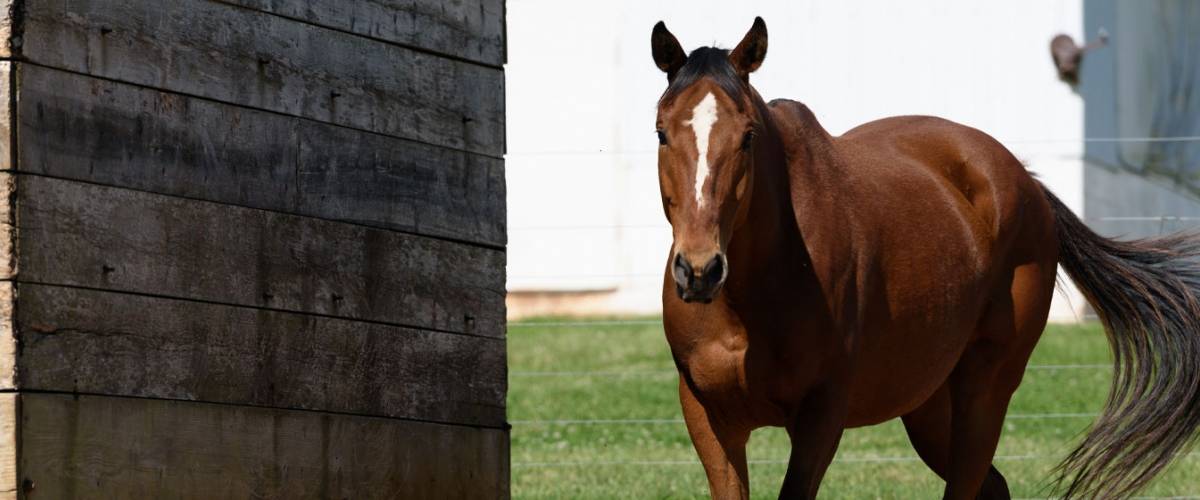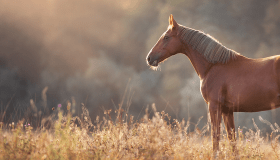
June 20, 2019 – As a species, horses are prone to joint infections. Now, a new approach to these infections may help greatly improve treatment and diagnosis, and improve outcomes for our equine companions.
Drs. Lauren Schnabel and Jessica Gilbertie, Morris Animal Foundation-funded researchers at North Carolina State University, are working on an innovative approach to address joint infections. Their team, with collaborators from the University of Pennsylvania, developed and are testing a specialized platelet-rich (PRP) lysate biologic that helps the immune system recognize bacteria and work in concert with antibiotics.
Drs. Schnabel and Gilbertie’s team is injecting the novel PRP lysate product along with antibiotics directly into the joints of equine patients with infected joints. Preliminary results are encouraging.
“The blood factors in this highly platelet-concentrated product are so small that they burrow into and penetrate the biofilms,” said Dr. Gilbertie. “This creates a small enough entry that allows the neutrophils (specialized cells of the immune system) and antibiotics to respond and attack the bacteria.”
Any wound near a joint of a horse, regardless of wound size, requires immediate veterinary attention. A small wound or puncture into the joint from a broken board or nail or even thorns, cactus needles or porcupine quills, is enough to let bacteria creep in and infections to take hold and flourish. Left untreated, joint infections can be life-threatening. Even when the infection is successfully treated, damage to the joint can lead to chronic arthritis.
Currently, veterinarians use a combination of health history, physical examinations, imaging and joint fluid analysis and culture to diagnosis an infected joint. Treatments are focused on surgical flushing of the joint and broad-spectrum antibiotic coverage, both systemically (generally intravenous) and locally, either into the joint or by regional perfusion of the limb. However, treatment of these infections is challenging. Despite aggressive care, about 6% to 10% of horses die as a result of the infection or associated complications. For horses that survive, more than 50% will suffer from chronic arthritis for the rest of their lives.
A main complication that impedes successful treatment is the tendency for some bacteria to form biofilms in the joint. A biofilm is a community of bacteria surrounded by a sticky, slimy shield that helps infections be more resistant to antibiotics. New solutions to tackle biofilms’ resiliency are desperately needed so antibiotics can do a better job at eliminating infections.
“So far, result of patients receiving this trial treatment are promising,” said Dr. Schnabel. “We are seeing an increased immune response and effectiveness of treatment. The next step is to create enough of the PRP lysate product to test the biologic in a larger population of horse patients.”
If successful, this approach could not only help horses but has translational potential to help other species of animals, including humans. For example, biofilm formation and infection are a big problem for people with metal implants such as those used in joint replacement surgeries. Even our pets are not immune from biofilm formations related to surgical procedures, making it more difficult to treat related infections.
Morris Animal Foundation has been supporting equine health research for more than sixty years. And we could not do this lifesaving work without our animal-loving donors. Thanks to you, we are able to invest in studies for complex health issues in horses, including persistent joint infections. Your donations are helping researchers like Drs. Schnabel and Gilbertie build pathways to health solutions to provide longer, healthier lives for horses.
If you want to learn more about joint infections in horses, check out our podcast.




